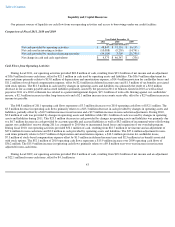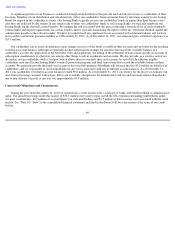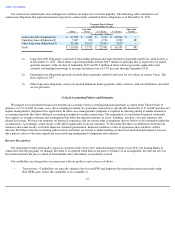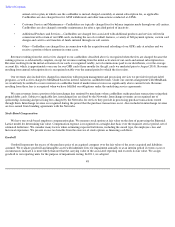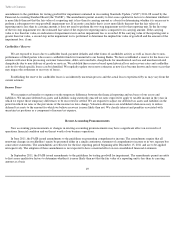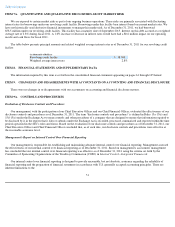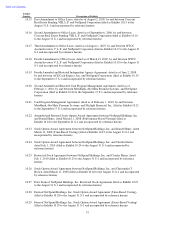NetSpend 2011 Annual Report Download - page 53
Download and view the complete annual report
Please find page 53 of the 2011 NetSpend annual report below. You can navigate through the pages in the report by either clicking on the pages listed below, or by using the keyword search tool below to find specific information within the annual report.
Table of Contents
amendments to the guidelines for testing goodwill for impairment contained in Accounting Standards Update ("ASU") 2011-08 issued by the
Financial Accounting Standard Board (the "FASB"). The amendments permit an entity to first assess qualitative factors to determine whether it
is more likely than not that the fair value of a reporting unit is less than its carrying amount as a basis for determining whether it is necessary to
perform a subsequent two-step goodwill impairment test. If an entity concludes that it is not more likely than not that the fair value of a
reporting unit is less than its carrying amount, it does not need to perform the two-step impairment test for that reporting unit. In the first step
of the two step impairment test, the estimated fair value of the respective reporting unit is compared to its carrying amount. If the carrying
value is less than fair value, no indication of impairment exists and no impairment loss is recorded. If the carrying value of the reporting unit is
greater than fair value, a second step in the impairment test is performed to determine the implied fair value of goodwill and the amount of the
impairment loss, if any.
Cardholders' Reserve
We are exposed to losses due to cardholder fraud, payment defaults and other forms of cardholder activity as well as losses due to non-
performance of third parties who receive cardholder funds for transmittal to our Issuing Banks. We have established a reserve for the losses we
estimate will arise from processing customer transactions, debit card overdrafts, chargebacks for unauthorized card use and merchant-related
chargebacks due to non-delivery of goods or services. We establish these reserves based upon historical loss and recovery rates and cardholder
activity for which specific losses can be identified. We regularly update our reserve estimates as new facts become known and events occur that
may impact the settlement or recovery of losses.
Establishing the reserve for cardholder losses is an inherently uncertain process and the actual losses experienced by us may vary from the
current estimate.
Income Taxes
We recognize tax benefits or expenses on the temporary difference between the financial reporting and tax bases of our assets and
liabilities. We measure deferred tax assets and liabilities using statutorily enacted tax rates expected to apply to taxable income in the years in
which we expect those temporary differences to be recovered or settled. We are required to adjust our deferred tax assets and liabilities in the
period in which tax rates or the provisions of the income tax laws change. Valuation allowances are established when necessary to reduce
deferred tax assets to the amount for which we believe recovery is more likely than not. We classify interest and penalties associated with
uncertain tax positions as a component of income tax expense.
Recent Accounting Pronouncements
New accounting pronouncements or changes in existing accounting pronouncements may have a significant effect on our results of
operations financial condition and on the net worth of our business operations.
In June 2011, the FASB issued amendments to the guidelines on presenting comprehensive income. The amendments require that all
nonowner changes in stockholders' equity be presented either in a single continuous statement of comprehensive income or in two separate but
consecutive statements. The amendments are effective for the first reporting period beginning after December 15, 2011 and are to be applied
retrospectively. The adoption of these amendments is not expected to have a material effect on our consolidated financial statements.
In September 2011, the FASB issued amendments to the guidelines for testing goodwill for impairment. The amendments permit an entity
to first assess qualitative factors to determine whether it is more likely than not that the fair value of a reporting unit is less than its carrying
amount as a basis
49






